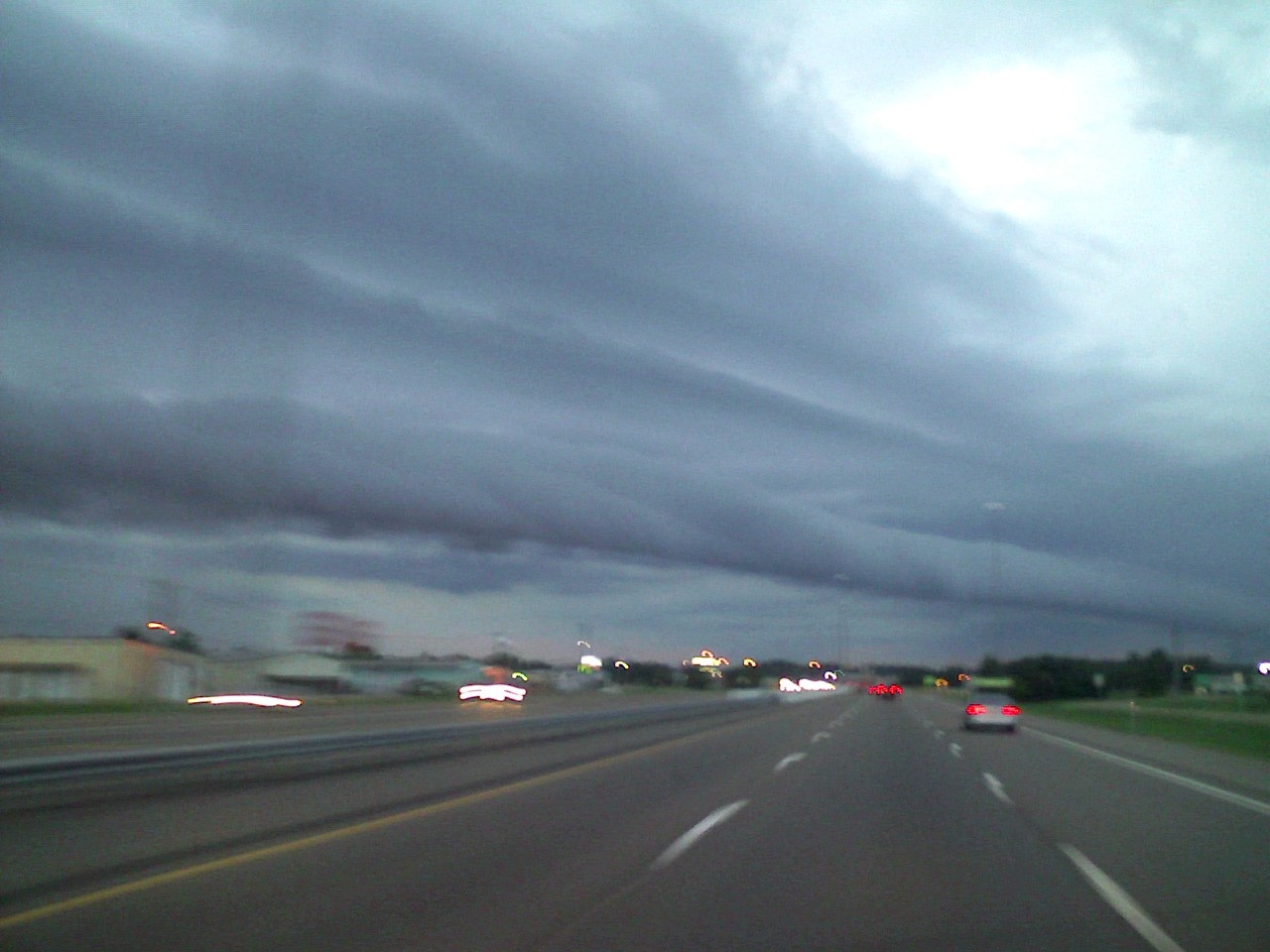'Horizontal Tornado' Captured By Amateur Videographer

New images of a weird weather phenomenon known as a roll cloud have surfaced from Richland, Miss.
The images, taken on a camera phone by Mississippi resident Daniel Blake Fitzhugh, reveal a seemingly endless roll cloud, or arcus cloud, a low cloud formation that forms over the sea or at the edges of thunderstorms. Fitzhugh sent in an image and video of the cloud to LiveScience after seeing an earlier report of a roll cloud off the coast of Brazil.
Fitzhugh told LiveScience he captured the video and image of a roll cloud in 2010 in Richland, a town on the outskirts of Jackson, Miss.
"It had been cloudy and windy all day," Fitzhugh wrote in an email. "I was heading north and the cloud was going west to east. I noticed it and was extremely surprised! I had never seen anything like it before." [See video of the roll cloud]
The cloud was rolling around like a "sideways tornado," Fitzhugh said. In fact, roll clouds form where sinking cold air drives low-hanging, moist warm air upward, where cooler temperatures condense the moisture in that air to form clouds. Winds create the weird rolling effect. Their more commonly spotted cousin, shelf clouds, form on the leading edges of thunderstorms; while shelf clouds are attached to the bulk of a storm, these tubular clouds aren't.
Tornadoes are also associated with storms, but they occur when thunderstorm updrafts tilt rotating air vertically. Unlike tornadoes, roll clouds aren't dangerous.
They are rare, however. One of the best chances to see a roll cloud is off the coast of Queensland, Australia. Here, sea winds regularly form a reoccurring roll cloud known as Morning Glory during the fall months.
Get the world’s most fascinating discoveries delivered straight to your inbox.
You can follow LiveScience senior writer Stephanie Pappas on Twitter @sipappas. Follow LiveScience for the latest in science news and discoveries on Twitter @livescience and on Facebook.

Stephanie Pappas is a contributing writer for Live Science, covering topics ranging from geoscience to archaeology to the human brain and behavior. She was previously a senior writer for Live Science but is now a freelancer based in Denver, Colorado, and regularly contributes to Scientific American and The Monitor, the monthly magazine of the American Psychological Association. Stephanie received a bachelor's degree in psychology from the University of South Carolina and a graduate certificate in science communication from the University of California, Santa Cruz.


